Crips and Bloods: Made in America
7.2 /10 1 Votes
Initial release January 23, 2009 (USA) Duration Language English | 7/10 IMDb Genre Documentary, Crime Initial DVD release May 19, 2009 Screenplay Stacy Peralta, Sam George Country United States | |||||||||||||||||||||||||||||||||
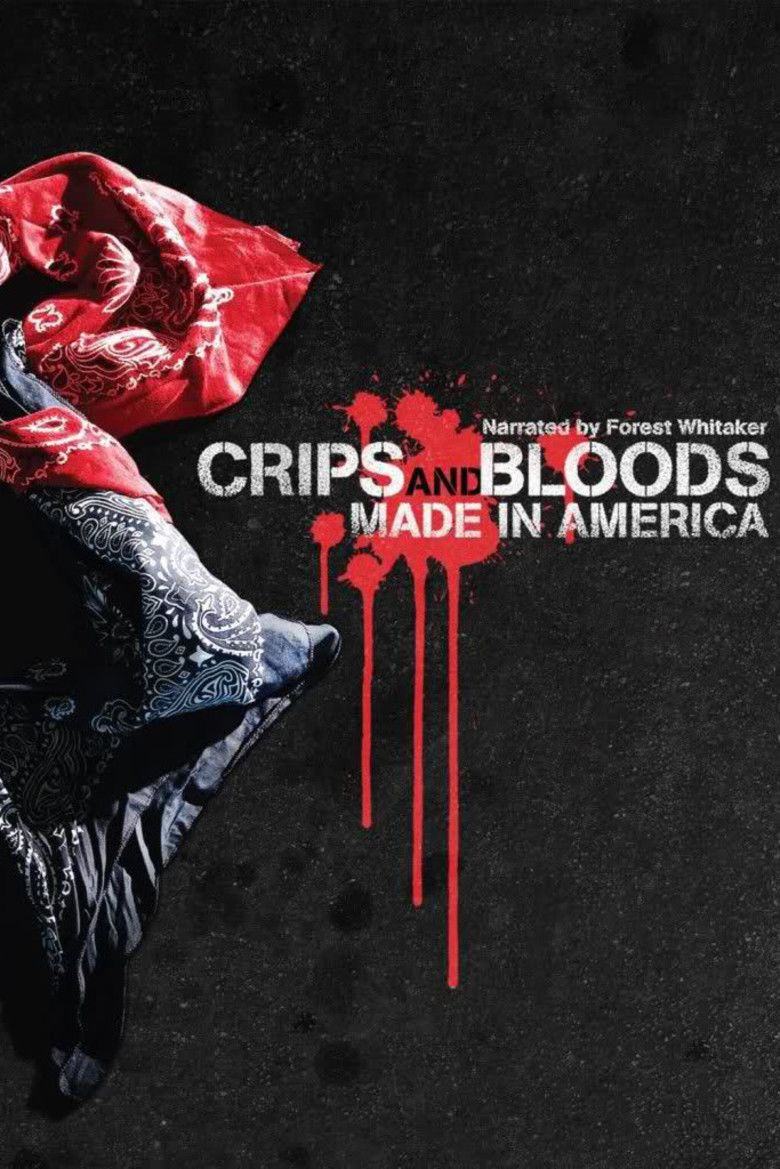 | ||||||||||||||||||||||||||||||||||
Cast Forest Whitaker Writer Stacy Peralta, Sam George Similar movies Eastern Promises , Automata , The Whole Nine Yards , Collateral , Lucky Number Slevin , Kiss Kiss Bang Bang | ||||||||||||||||||||||||||||||||||
Crips and bloods made in america
Crips and Bloods: Made in America is a documentary by Stacy Peralta that examines the rise of the Crips and Bloods, prominent gangs in America. The documentary focuses on the external factors that caused African-American youth to turn to gangs and questions the political and law enforcement response to the rise of gang culture.
Contents
- Crips and bloods made in america
- Cast
- Film
- Storyline
- Organizational neglect
- Los Angeles Police Department
- Watts riots
- California economy
- Drug trade
- Crips
- Identification
- Crips rivalry
- Bloods
- Bloods rivalry
- References
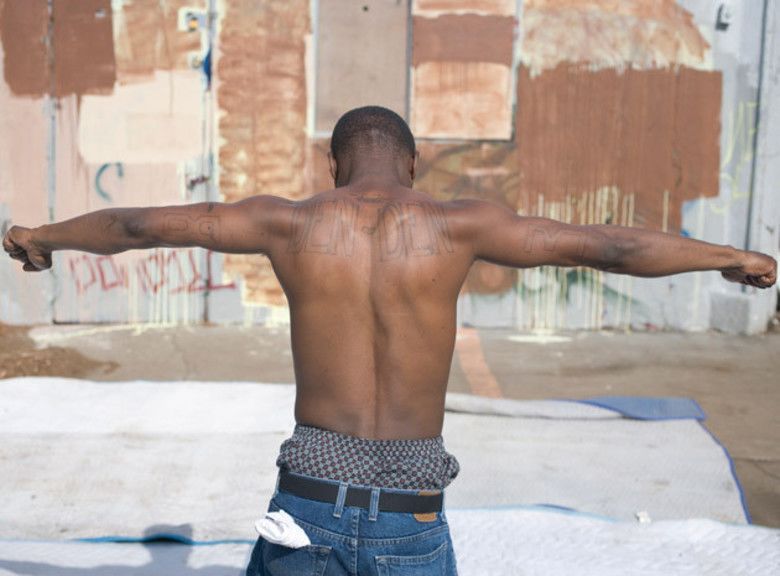
Cast
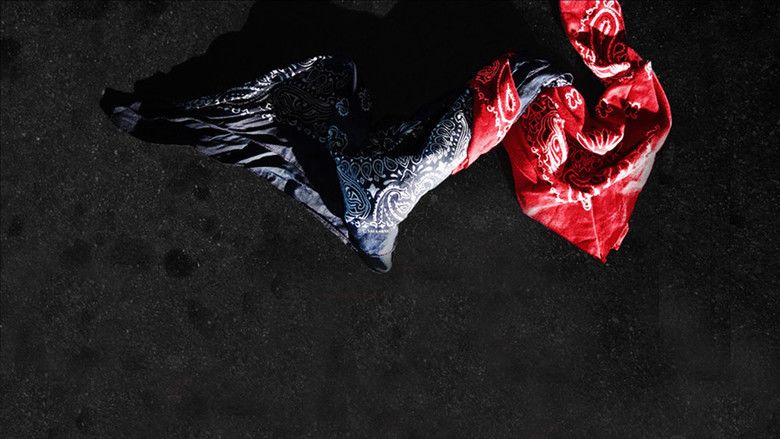
Bo Taylor: He is former Schoolyard Crip and the founder of Unity One, a privately funded organization dedicated to peacemaking and the transformation of gang members into productive citizens.
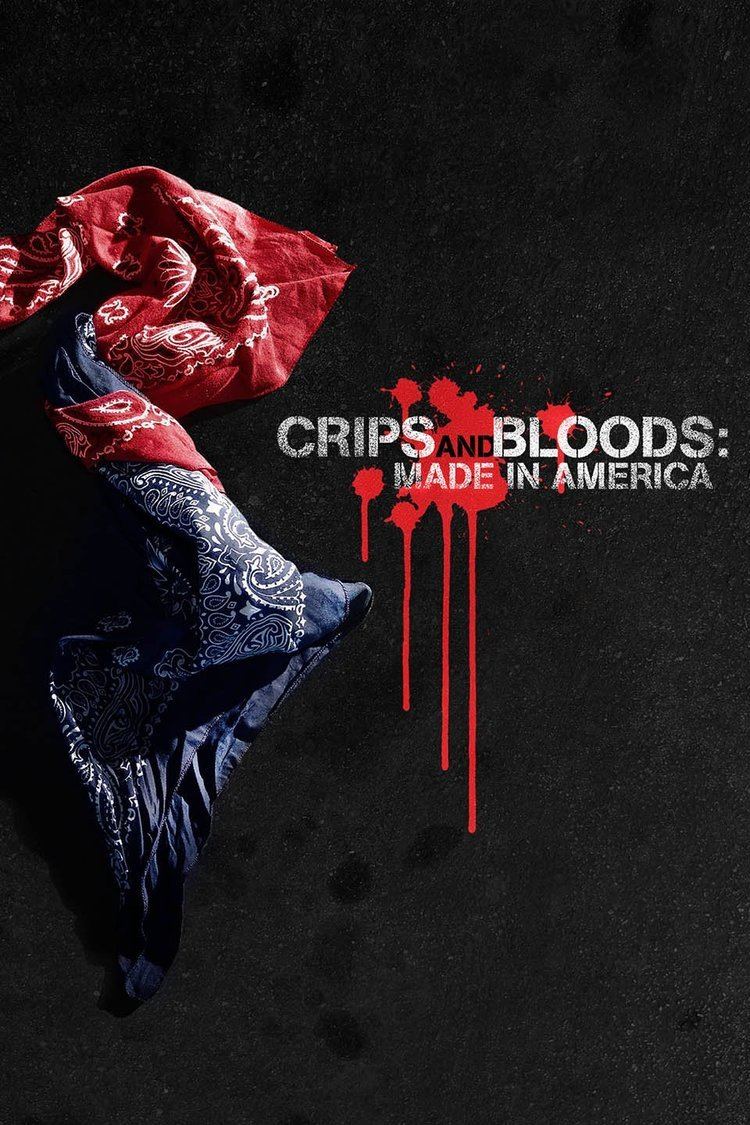
Skipp, Nikko and Bow Wow: Former Bloods and Crips members that join together as a part of Unity One, working to help active gang members make a better living and make the transformation they need.
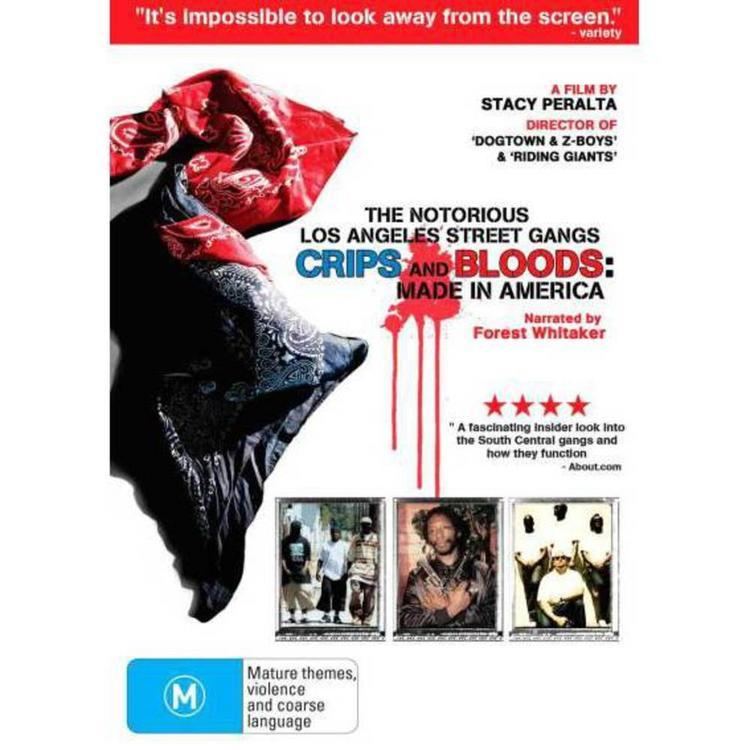
Jim Brown: Pro Football Hall of Famer foundeds of the Amer-I-Can foundation. The mission of the foundation is to help provide life management skills and resources to at-risk youth and has been doing so for more than 20 years.
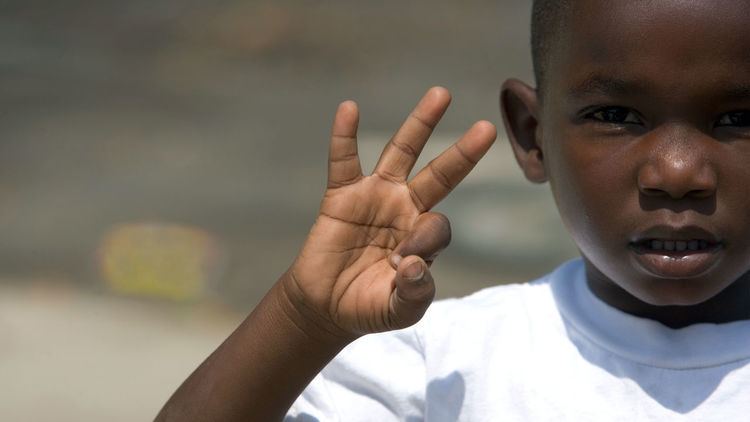
Rock Johnson: Former original Compton Crip member and currently the National Chief of Staff of the Amer-I-Can foundation. He is also the founder of the I-Can Youth Foundation.
Vicky D. Lindsey: Founder of Project Cry No More, a privately funded organization dedicated to providing therapy to mothers who have lost their children to gang violence.
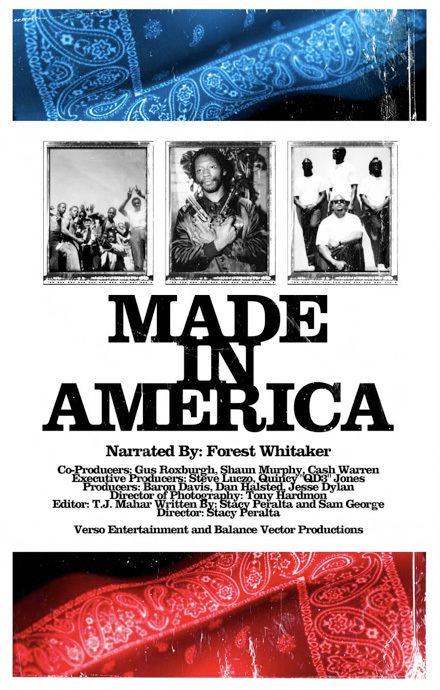
Minister Tony Muhammad: Wester Regional Minister for the Nation of Islam and founder of Peace Makers, a privately funded program dedicated to resolving gang conflict.
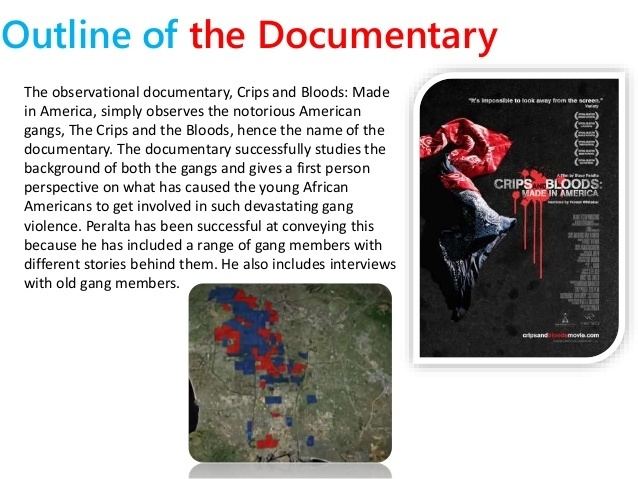
T. Rodgers: Founder of Sidewalk University and author of two books on gang culture (one of them being '1995's - The Uprising and "Do or Die'" ) Rodger works on bringing armistice to gangs of all color and denominations, nationally and internationally.
Aquil Basheer of Maximum Force Enterprises and Aqeela Sherrils of The Reverence Project, both currently direct an intervention program specializing in the violence abatement, truce negotiation, and youth empowerment.
Terry Goudeau, Naji Harris, and James Harris: Original gang members and now working as community recovery and reconciliation counselors.
Kumasi, Bird, and Ron: Former Slauson gang members and now activist, educators, and community leaders dedicated to forging unity between African Americans and Latinos.
Film
The documentary is set in South Central Los Angeles, and the film emphasizes the area's proximity to some of America's wealthiest communities. South Central is five miles from Hollywood and twenty miles from Anaheim and Orange County. The documentary notes that children who grow up to join gangs often face a severe deficit of opportunities and highlights that the American Dream appears out of reach for the youth of South Central. Crips and Bloods: Made in America notes that violence between the two gangs has taken more than 15,000 lives to date, a total that is five times greater than those lost during Ireland's sectarian conflict. However, per capita the Northern Irish conflict resulted in a much higher murder rate.
Storyline
The documentary begins with a discussion of the circumstances that led to the rise of violent gangs including a lack of youth outlets, a need for in-group protection, and the emergence of the modern drug trade.
Organizational neglect
The film interviews former gang members who describe being turned away from youth organizations such as the Boy Scouts of America and Explorer Scouts of America. The interviewees discuss how young African-American men are neglected from predominantly white organizations, and that black youth across South Central often have no place for developing a sense of identity. The interview subjects discuss how this gave gang culture a special appeal, especially among youth who lacked a sense of belonging.
The documentary also notes how gang culture rose from competition between neighborhood cliques, namely groups like the Slausons, Dell Vikings, and the Gladiators. In addition to providing a sense of community for local youth, these groups also fought back against white gangs who routinely caused problems in black neighborhoods. These first organizations offered a newfound unity and sense of safety for young black men that was otherwise out of reach.
Los Angeles Police Department
Due to the perceived criminality of African-American men, the Los Angeles Police Department under the direction of Chief Officer William Parker, regulated the Los Angeles area. Parker believed in a hardline approach to gang violence and resisted using social work to quell the violence. One of the ways he enforced this was through locking down African-American neighborhoods.According to Kumasi, a former Slauson gang member, "You had to be at the right neighborhood at the right time. You couldn't go east of Alameda, for example."
East of Alameda was a predominantly white neighborhood, where African Americans were not welcomed during the high of the Civil Rights Movement. Kumasi further discusses the invisible barriers that were established. If one was found walking through the “wrong neighborhood” they were questioned. This, in essence, limited the freedom to walk wherever one pleased.
Kumasi later described the experience of an African-American man of Los Angeles as a "walking time bomb". They were experiencing so much hatred from the police that sooner or later they would erupt. "The only question was upon whom," he said.
Watts riots
The documentary then demonstrates how these African-American experiences set the stage for the Watts riots. African Americans were being killed for small crimes. After a police encounter lead to the arrest of an intoxicated man, his brother, mother, and other African Americans took to the streets against the Los Angeles Police Department to protest the racial injustices against them. Chief Officer William Parker fueled the already racialized tension by calling African Americans "monkeys in a zoo". News papers around the country were covering the riots and the documentary discusses the way it was portrayed by the media.
Institutional changes occurred afterwards. The documentary discusses the changes made by the Black Panther Organization and the backlash they received. FBI investigations claimed that the "Black panthers were the biggest threat to internal stability of USA". Black Panther leaders were murdered and arrested. After those leaders disappeared, the new generation started: the Crips and Bloods (see background, membership, and history below).
California economy
California was different from other parts of the South. There were no prior bus laws or segregation in public schools. However, there were covenants against black housing and neighborhood segregation. Even after it was outlawed, neighborhoods remained the same.
Industrialization came to Los Angeles in the late 1950s in response to the booming industrialization of the country. The American economy was changing to an economy with either high end or low end jobs. African Americans found themselves displaced in the job market. They did not have the prior skills, knowledge, or education to perform the high wage technological jobs due to the historical discrimination and lack of opportunities.
They also did not feel like they, as US citizens, should have to perform the low labor jobs either. African Americans felt that they were above the immigrant low level jobs. This resulted in total displacement form the labor market. Eventually, by the latter half of the 1960s, jobs and factories disappeared from the Los Angeles region. The consequences were enormous: businesses were empty with nowhere to turn. It simply became harder and harder to survive.
Drug trade
After the introduction of crack cocaine, even African-American families were torn apart; family institutions also became dysfunctional. There were no male role models in the family. Seventy percent of black children were born to single mothers. Twenty eight percent of all black men would be incarcerated in their lifetime. The disproportionate number of black men in prison made the possibility of a male figure in an African-American family even less likely.
Crips
The Slausons are widely considered as the first modern gang in Los Angeles. The Slausons evolved into what is still today, one of the most infamous sects of the Crips, eventually becoming part of the Rollin 60s. Crips are well known as one of the largest and most violent gangs in the United States, with an estimated membership of around 35,000-40,000.
Crips were founded by Raymond Washington and Stanley Tookie Williams in Los Angeles, California, in 1969. Washington and Williams decided to unite a few local gangs from different sides of Los Angeles in order to battle against the other neighboring street gangs. In other words, they wanted to start the gang to protect their territory in South Central Los Angeles from the other dangerous gangs.
Williams said his intent in starting the Crips was to “address all of the so-called neighboring gangs in the area and to (...) cleanse the neighborhood of all [the] (...) marauding gangs.'" This strategy failed and eventually the gang morphed into the 60s Crips - the very "monster" they were trying to address.
Ironically, Washington disliked firearms and knives and believed that only hand-to-hand combat demonstrated real strength. Since his early years, Washington often got into fights and was in trouble with the Los Angeles Police Department. He was always a muscular and athletic man but was excluded from sports due to his poor grades and his constant expulsions. Washington was murdered five days from his 26th birthday on August 9, 1979. His murder still remains unsolved.
Identification
The name “Crips” was chosen after narrowing down to various names. The word “Crips” was generated from the younger gang members acting like pimps, and their cane and walk caused people in their neighborhoods to call them “cripples” and was later shortened to “Crips”. It reflected the young age of majority of the gang members, many of which were 17 years old.
Crips usually have blue in their clothing which came to represent their gang. Williams recalled that one of the Crips leaders Buddha often wore a blue bandana. Since then, the color blue has been associated with Crips.
Crips’ rivalry
In 1971 the Crips’ biggest rivalry formed. The Piru Street Boys from Compton, California, who had first associated themselves with the Crips, separated to form the biggest, and most infamous, rivalry in US history, the Bloods.
Bloods
The Bloods are a street gang originating from Los Angeles, California. They began as the Pirus Street Gang which broke up during an internal gang war during the 1970s. They joined other small gangs and became known as the Bloods with the primary enemy as the Crips.
Bloods are often known as the MOBs (“Members of Bloods”). Bloods call themselves the CKs (“Crip Killers). Bloods greet each other by saying the word “blood”. They try to avoid any word which starts with or even includes the letter ‘C’.
The “Associates” are not fully members of the gang yet. They mostly took part in some of the criminal activities. Many times, women were associates because they would help carry the gang members’ guns or hold drugs. Women could even engage in sex work to make money for the gang.
Bloods’ general members were called “Soldiers”. Soldiers usually consisted of young African-American men around the age of 16-22. They were typically dangerous gang members because they were looking for an opportunity to show their commitment. Many times they were willing to do just about anything to get respect within the gang. By committing dangerous acts, they would not only make their name within the gang but also gain respect from the gang’s leaders.
Once someone joined a gang there was no turning back or switching.
“Big Homies” were the senior leaders of the Bloods. Leaders were chosen by age and criminal record. In general, the older the member and the more dangerous the criminal record meant the higher the rank.
By 1996 the Bloods had thousands of members. During this period, they were much more violent than any other gangs but were still not well-organized.
Identification
Bloods members usually identified themselves with the color red. Everything from their jewelry, clothing, and tattoos had red. Sometimes they even affiliated themselves with sports teams such as the San Francisco 49ers and the Chicago Bulls due to the color red.
Bloods’ rivalry
At the time of their establishment in the 1970s, The Crips outnumbered the Bloods almost three to one. The purpose for the Bloods was to compete against the Crips in the South Central streets.
References
Crips and Bloods: Made in America WikipediaCrips and Bloods: Made in America IMDb Crips and Bloods: Made in America themoviedb.org
